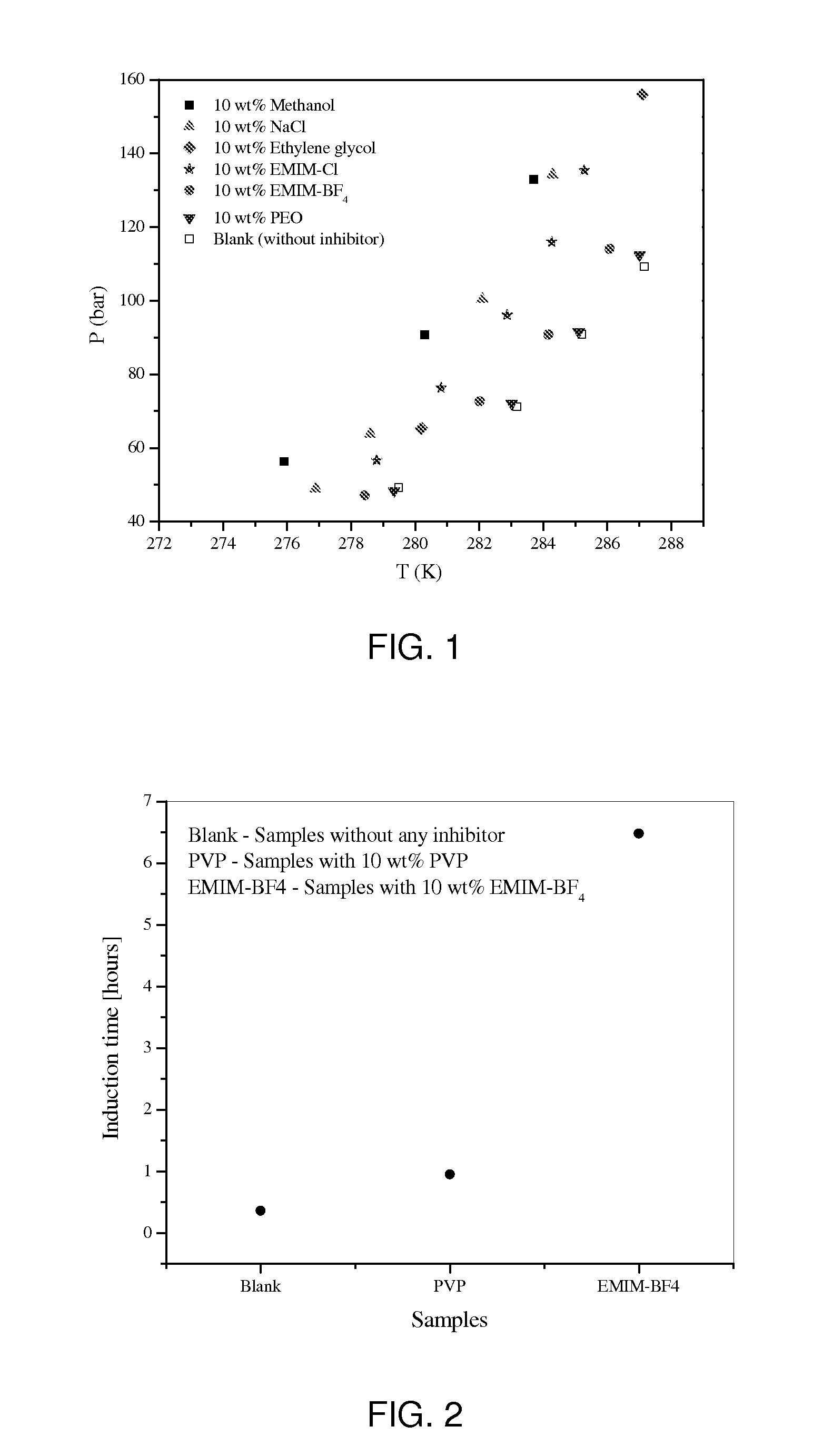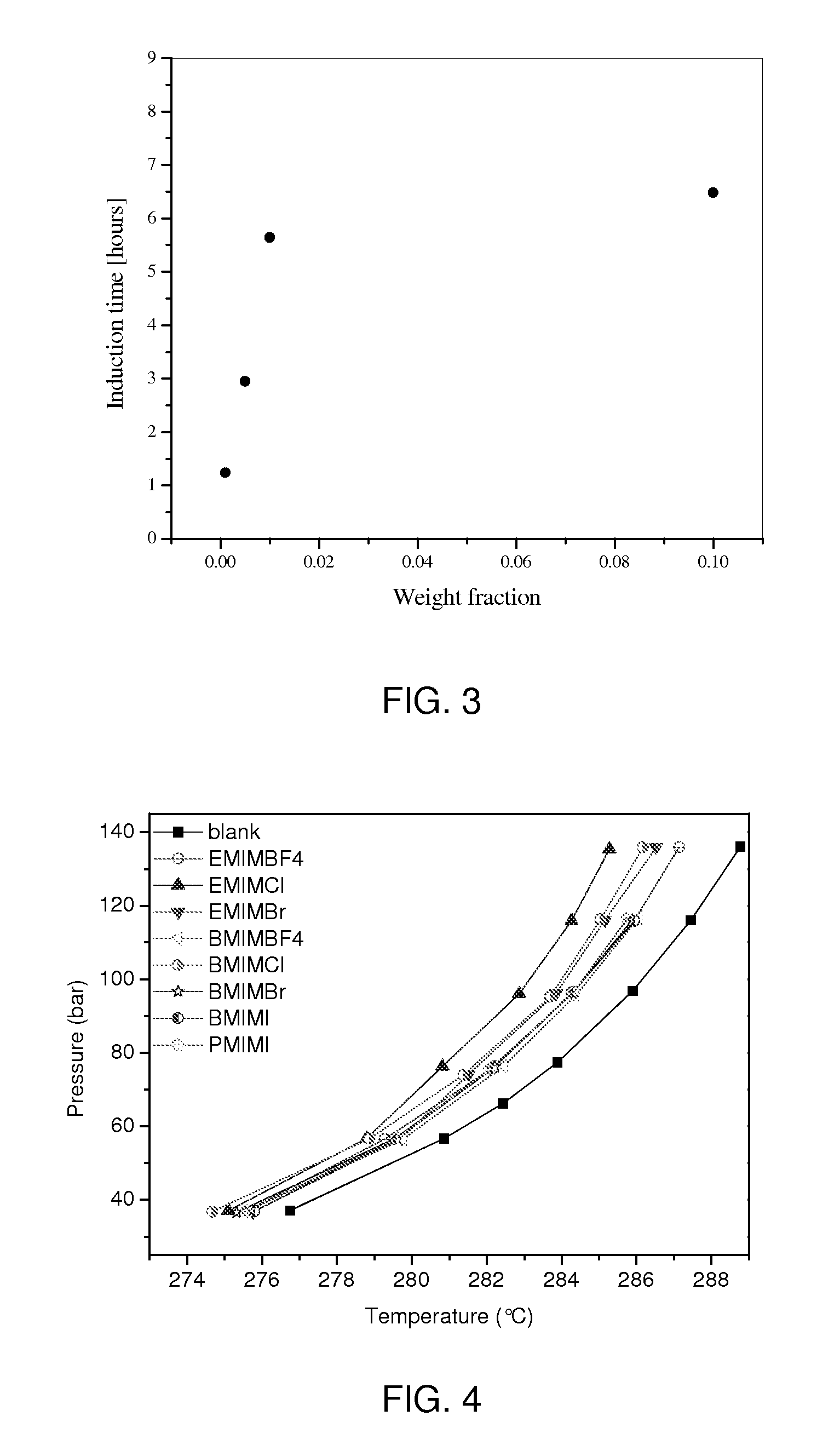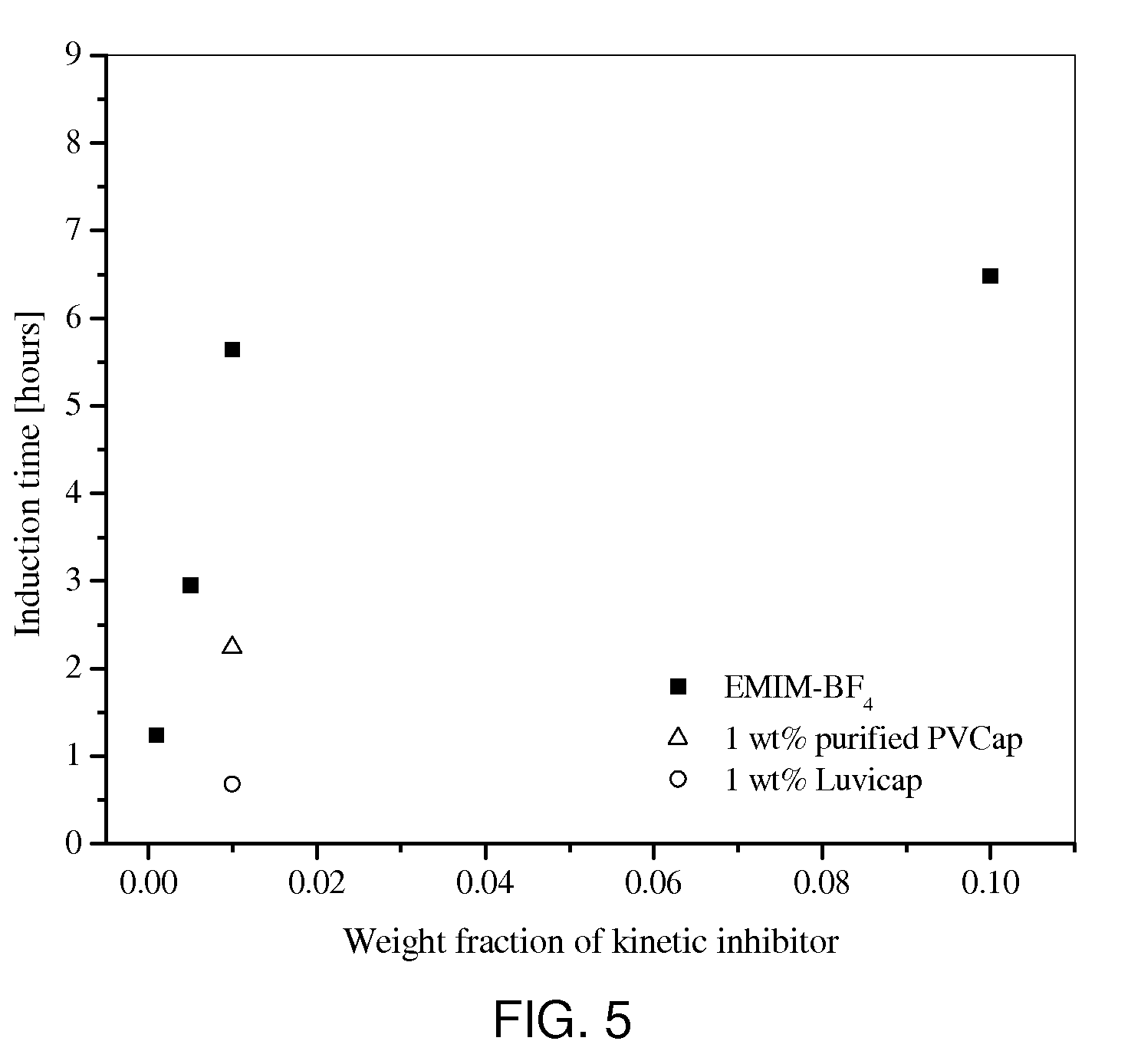Dual Function Gas Hydrate Inhibitors
a technology of gas hydrate inhibitors and inhibitors, which is applied in the direction of gaseous fuels, borehole/well accessories, other domestic articles, etc., can solve the problems of long-standing problems, severe threats to operation safety, and safety hazards, and achieve the effect of inhibiting clathrate hydrate formation, and reducing the risk of clathrate hydrate formation
- Summary
- Abstract
- Description
- Claims
- Application Information
AI Technical Summary
Benefits of technology
Problems solved by technology
Method used
Image
Examples
example 1
[0013]In this example, 1-ethyl-3-methylimidazolium tetrafluoroborate (EMIM-BF4) and 1-ethyl-3-methylimidazolium chloride (EMIM-Cl) were used to evaluate the performance of ionic liquids on inhibiting methane hydrate formation. The hydrate dissociation temperature and induction time for samples containing EMIM-BF4 and EMIM-Cl were measured using a high-pressure Micro Differential Scanning Calorimeter (HP μDSC). Induction time is an important indicator to characterize the kinetics of gas hydrate crystallization; the induction time is the time elapsing until the moment at which the onset of precipitation can be detected. The measurement of induction time were performed at a severe condition favoring hydrate formation, i.e., at 114 bar and 25° C. supercooling.
[0014]FIG. 1 shows the effectiveness of EMIM-BF4 and EMIM-Cl as thermodynamic inhibitors compared to other existing thermodynamic inhibitors such as methanol, NaCl, ethylene glycol, and poly(ethylene oxide) (PEO). For the same conc...
example 2
[0016]The effectiveness of EMIM-halides, BMIM-halides (1-butyl-3-methylimidazolium-halides), and PMIM-I (1-pentyl-3-methylimidazolium iodide) as thermodynamic inhibitors were studied in the pressure range of 37 to 137 bar. The concentrations used were all 10 wt %. FIG. 4 shows the effectiveness of these inhibitors. Included in the figure are the effectiveness of EMIM-BF4 and BMIM-BF4, from Example 1. Among halides, chlorides are the best performers. Their performance is as good as that of ethylene glycol, one of the most widely used thermodynamics inhibitors. However, unlike the other existing thermodynamic inhibitors, these ionic liquids also delay the formation of methane hydrate. Thus, these ionic liquids function as both thermodynamic and kinetic inhibitors.
example 3
[0017]In Example 1, we compared the performance of EMIM-BF4 with that of PVP, which has been widely used by academia as kinetic inhibitor reference. However, in industry, PVP is being replaced by poly(N-vinylcaprolactam) (PVCap) or Luvicap® (40 wt % PVCap in ethylene glycol; BASF), which are considered to be more effective in inhibiting the hydrate nucleation and / or growth rate. In this example, we measured the induction times of methane hydrate formation from a solution containing 1 wt % Luvicap® and from a solution containing 1 wt % purified PVCap. The measurement procedure was the same as that reported in Example 1. As shown in FIG. 5, the performance of EMIM-BF4 was found to be much better than those of Luvicap® and purified PVCap.
PUM
| Property | Measurement | Unit |
|---|---|---|
| Temperature | aaaaa | aaaaa |
| Solubility (mass) | aaaaa | aaaaa |
Abstract
Description
Claims
Application Information
 Login to View More
Login to View More - R&D
- Intellectual Property
- Life Sciences
- Materials
- Tech Scout
- Unparalleled Data Quality
- Higher Quality Content
- 60% Fewer Hallucinations
Browse by: Latest US Patents, China's latest patents, Technical Efficacy Thesaurus, Application Domain, Technology Topic, Popular Technical Reports.
© 2025 PatSnap. All rights reserved.Legal|Privacy policy|Modern Slavery Act Transparency Statement|Sitemap|About US| Contact US: help@patsnap.com



